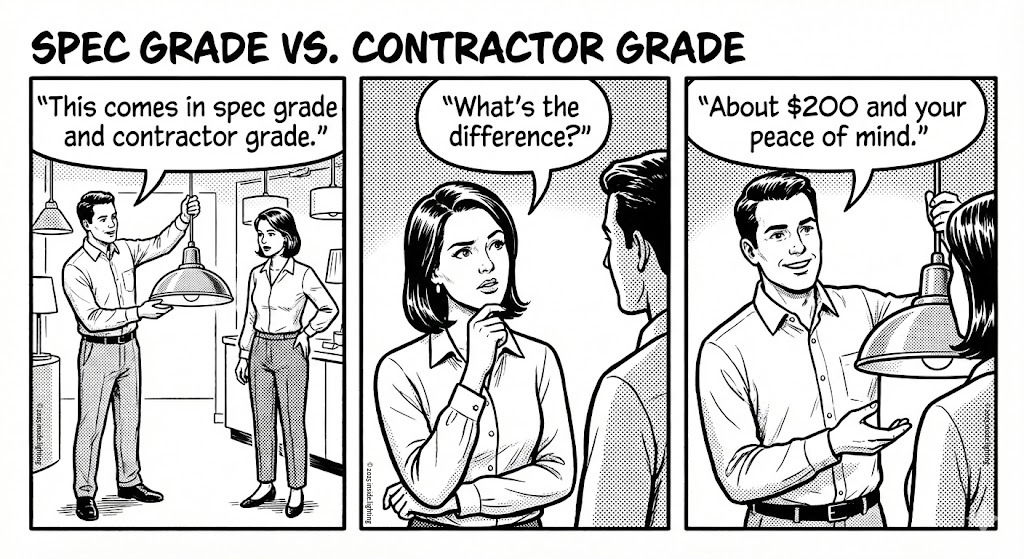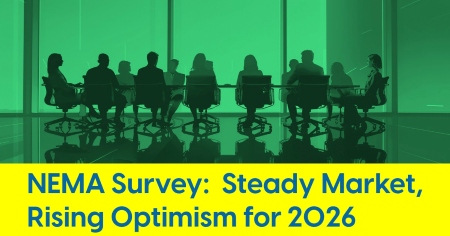March 6, 2025
Architects Face a New Era of Challenges and Opportunities

How lighting people might evolve to meet shifting priorities in design
The architectural profession is at an inflection point, and that may have significant implications for architectural lighting markets.
A new report published by researchers at the research organization RAND, Building Impact: Perspectives and Recommendations on the Current State and Future of Architecture, highlights an industry grappling with contradictions. Architecture firm billings have declined for two consecutive years, signaling economic uncertainty, yet the U.S. Bureau of Labor Statistics projects that demand for architects will grow faster than average from 2023 to 2033.
For those in the lighting industry — designers, manufacturers and sales agents — this instability presents both challenges and opportunities. Architects have long been the ultimate decision-makers when it comes to specifying building materials, including lighting solutions, but as they navigate financial pressures, shifting technology, and evolving industry expectations, their priorities are changing.
Understanding these shifts is important for anyone who works to support the architectural community and promote quality lighting in the built environment.
The Cracks in the System
A closer look at the architecture profession reveals a set of challenges that affect not just architects themselves, but also the industries that serve them.
1. A Mismatch Between Education and Practice
Architects enter the workforce unprepared for many of the realities of professional practice. While their education focuses on design theory and conceptual thinking, the skills most in demand — such as technical documentation and understanding building technology — are often underdeveloped. As a result, young architects struggle to transition from school to practice, making them hesitant to embrace new product categories or technologies they don’t fully understand. Lighting professionals hoping to connect with architects need to recognize this knowledge gap and offer resources that bridge it.
2. The Slow March of A.I.
Artificial intelligence is making its way into architecture, but the transition is uneven. While only 43% of architecture students report exposure to AI in their curriculum, 33% of practicing professionals say they are already using it. Larger firms are more likely to embrace AI, particularly for streamlining drafting and documentation, but skepticism remains. Many architects view AI as a tool for efficiency rather than a replacement for human creativity. For lighting manufacturers, the takeaway is clear: AI-driven design tools are coming, but architects still need education and support to integrate these technologies effectively.
3. The Diversity Situation
Architecture remains overwhelmingly white and male, with 62% of licensed architects being white men. Efforts to diversify the pipeline are yielding some results, but retention remains a challenge. Many architects from underrepresented backgrounds report feeling unsupported or facing barriers to advancement. The broader implications for lighting professionals? A new generation of architects is emerging with different priorities, including stronger commitments to equity, inclusion, and community-centered design. Aligning with these values will be critical.
4. Climate Pressures and Market Realities
Architects face increasing pressure to design buildings that mitigate climate change, but financial constraints often stand in the way. While sustainability is a top concern for architecture students and faculty, practicing professionals frequently cite cost and client resistance as barriers. Lighting plays a central role in sustainable design — energy-efficient solutions, daylighting strategies, and advanced controls can all contribute to lower-carbon buildings. However, these solutions need to be positioned not just as environmental imperatives, but as cost-effective, client-friendly investments.
What This Means for Lighting People
If lighting professionals want to maintain their influence with architects, they may need to adapt to these shifting realities.
- Bridge the education gap: Young architects may not have the technical expertise to fully understand advanced lighting solutions. Sales agents and manufacturers should position themselves as trusted educators, focusing on training and knowledge-sharing rather than just product promotion.
Lunch-and-learns and workshops can be structured as true professional development opportunities — helping architects navigate technical challenges, understand evolving codes, and integrate emerging lighting technologies — rather than feeling like a sales pitch.
- Support AI integration: The firms that embrace AI are the same ones that will drive new project methodologies. Lighting companies should stay ahead by ensuring their products and specification tools are compatible with AI-driven design workflows.
- Engage with diversity efforts: The future of architecture will be shaped by a more diverse workforce with different priorities about the built environment. Lighting firms that actively support inclusive design practices may be better positioned for long-term partnerships.
- Make sustainability practical: Architects want to design greener buildings, but they need solutions that make financial sense to their clients. Lighting professionals should frame their sustainability offerings in terms of ROI, operational savings, and occupant wellness.
Architecture seems to be at an inflection point. So is the relationship between architects and the industries that depend on them. For lighting people, the challenge is clear: architects are dealing with economic, technological, and cultural shifts that influence how they specify products. The industry must adapt accordingly — providing not just products, but knowledge, support, and strategic partnerships. Because in the end, good lighting isn’t just about technology. It’s about influence.










